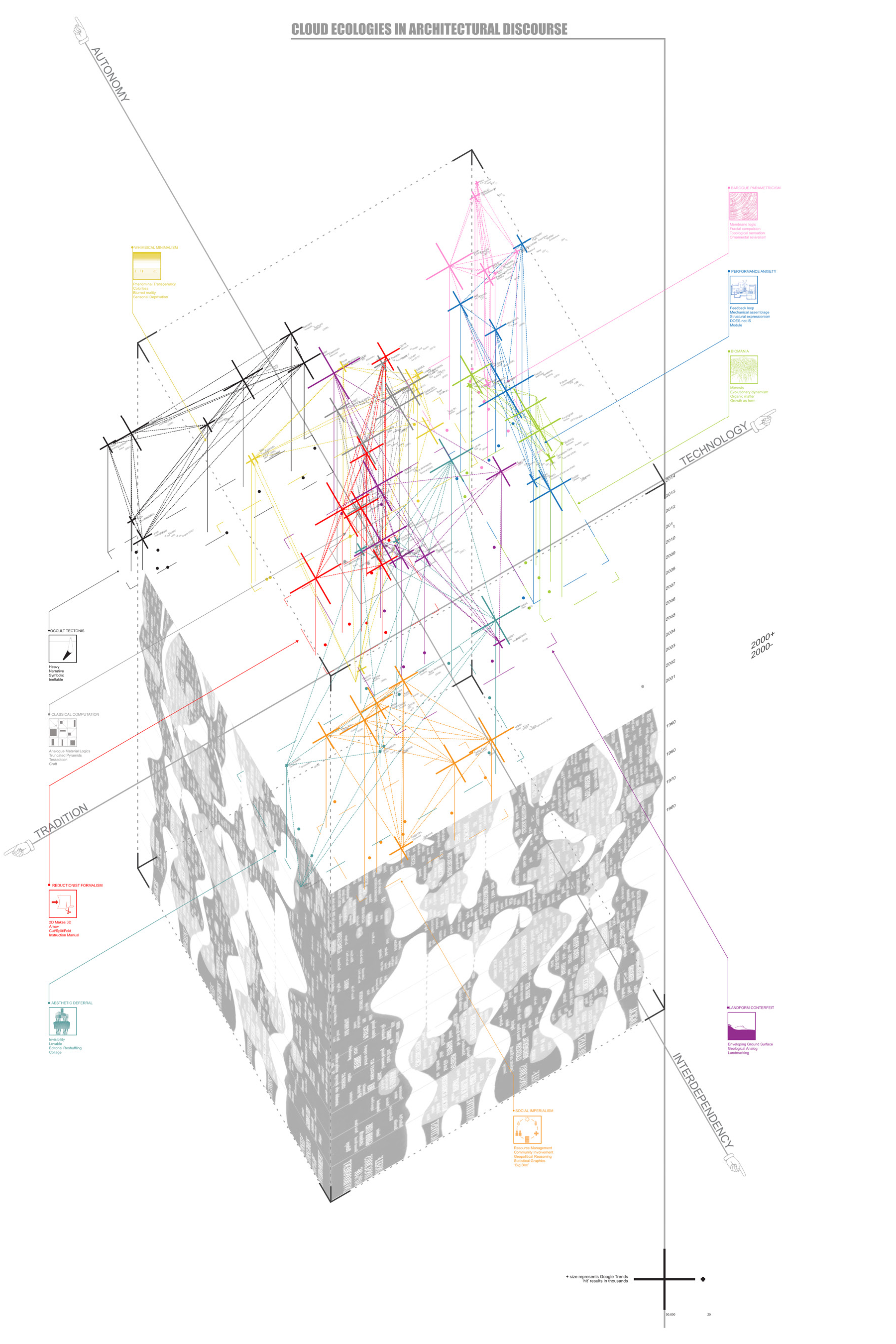Architecture — A Synoptic Vision: Example of an Evolutionary History. Adrian Meyer, Susanne Kuhlbrodt, and Beat Aeberhard, (Basel: Birkhauser Verlag AG, 2008)———the contents of the publication were created as part of a lecture series at the Department of Architecture at ETH Zurich……………the timeline recalls Charles Jencks's Evolutionary Tree of Twentieth-Century Architecture and is the collision of a structure that situates architects in time with thematic associations……as they interact, the form, extent, and location of these areas seem to act both like a connective tissue that binds the information as well as a mechanism for exposing particular strands within the underlying grid——-
Turtles Do Not Successfully Mate with Giraffes: Pluralism Versus Cloud. Lydia Kallipoliti———The article investigates the relevance or irrelevance of Charles Jencks’ influential diagram for an Evolutionary Tree of architectural traditions and the inadequacy of pluralism as a condition of the contemporary state of affairs.



